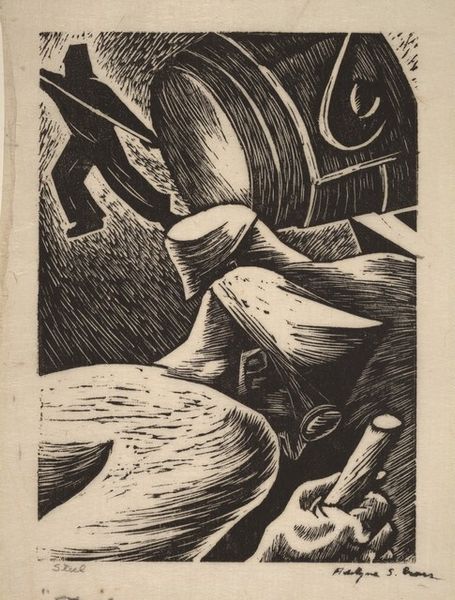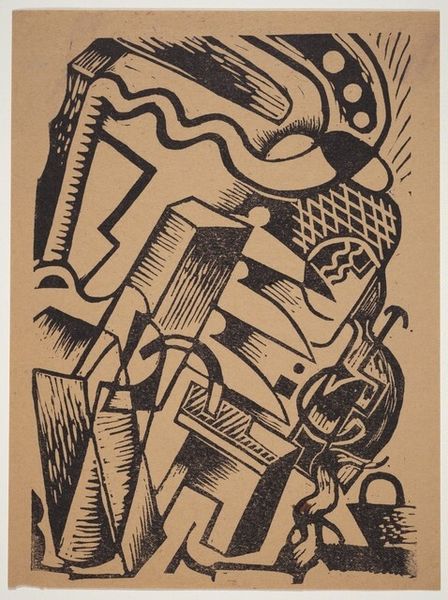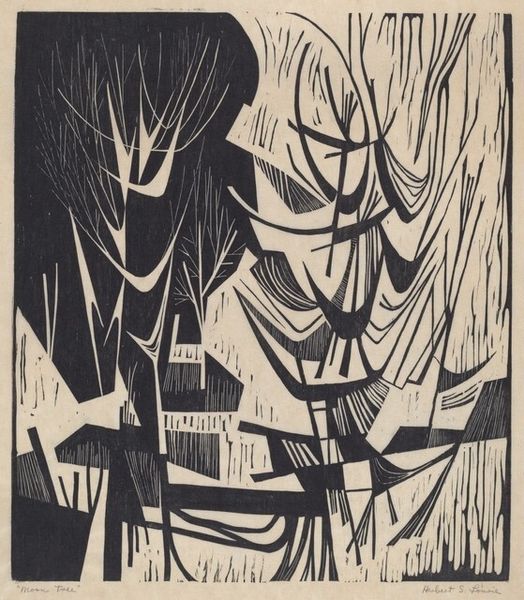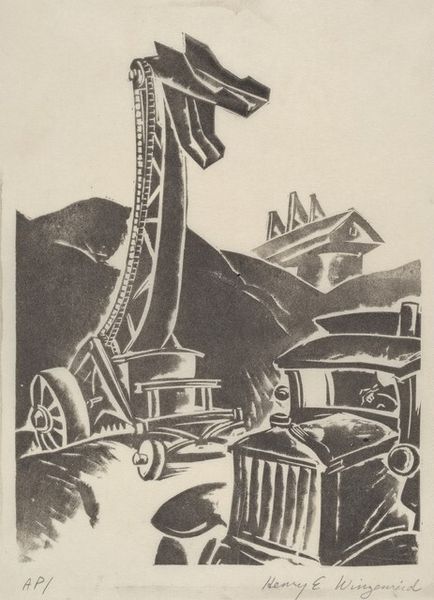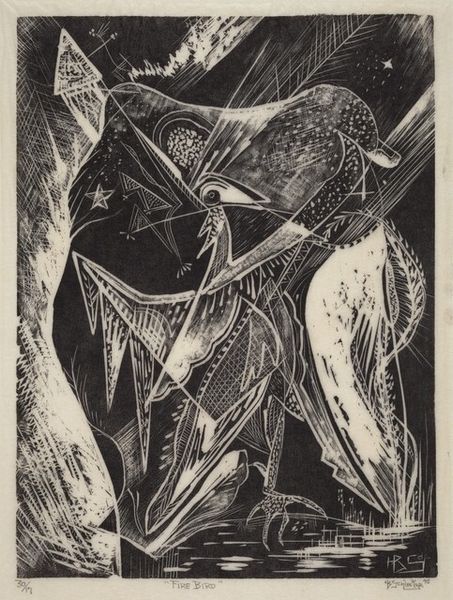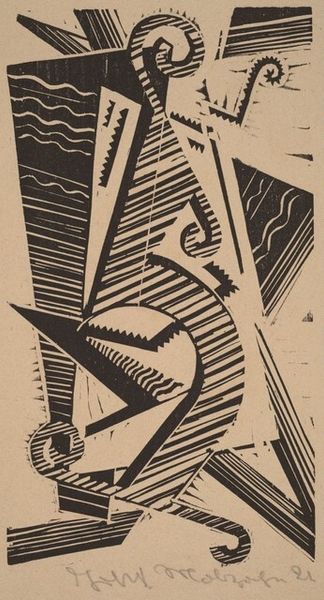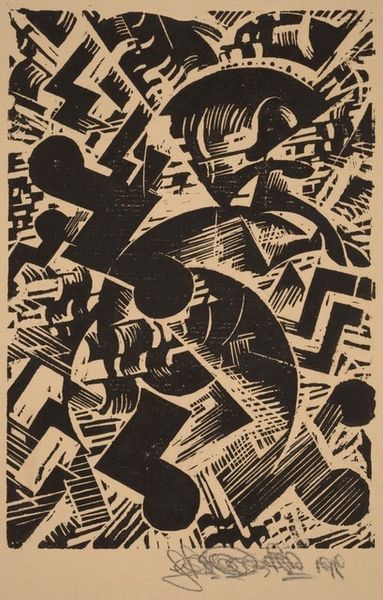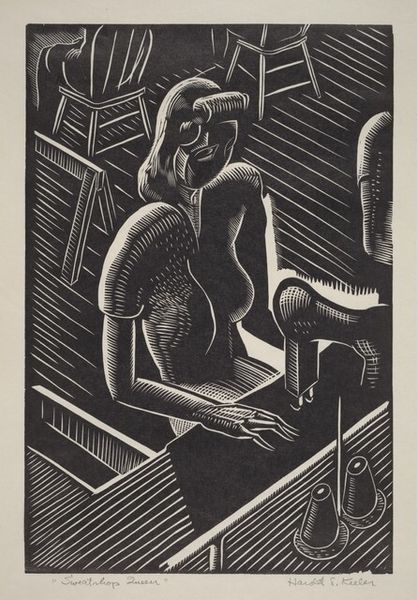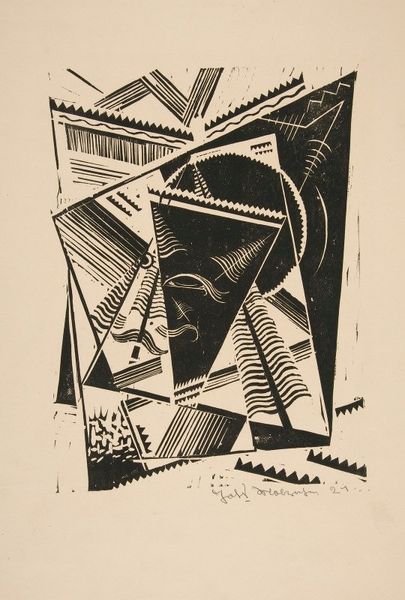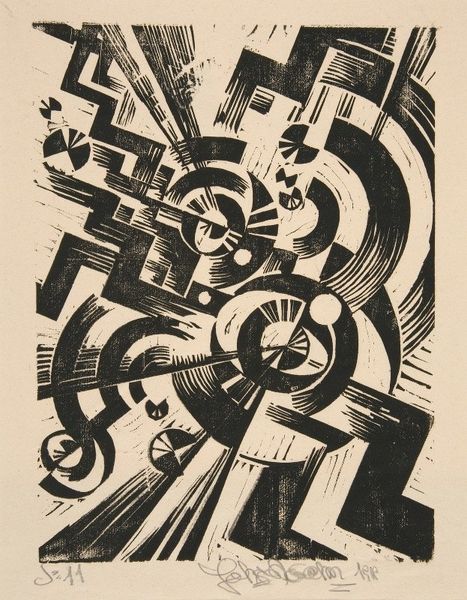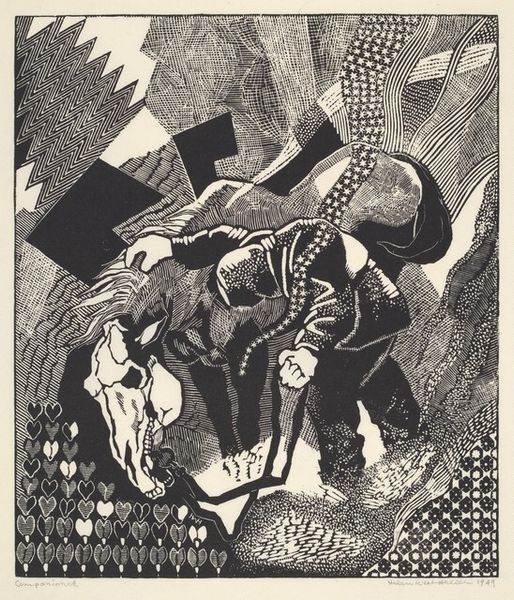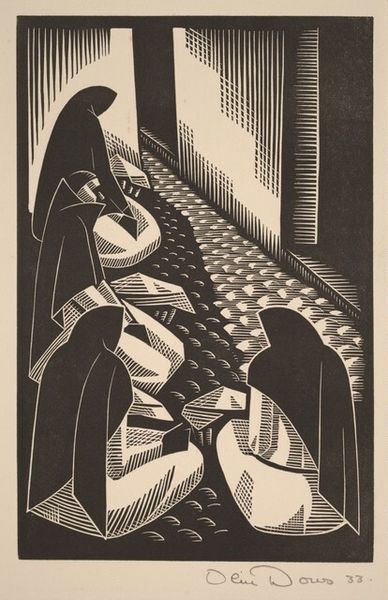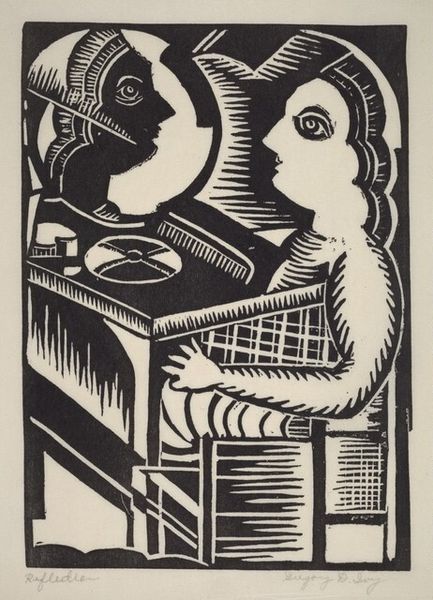
Dimensions: Image: 213 x 141 mm Sheet: 266 x 166 mm
Copyright: National Gallery of Art: CC0 1.0
Curator: Looking at Hughie Lee-Smith’s “Coat Hanger” from 1939, what immediately strikes you? It's a woodcut print. Editor: Well, initially it's quite striking, wouldn’t you agree? There's an intensity—the sharp contrast creates such high drama in a seemingly mundane subject. It almost feels claustrophobic to me. Curator: It’s interesting that you pick up on the drama, I feel it too. It might be connected to the era, just before World War II, and the looming darkness of those times seeping into the art. This artist does invite social commentary. The clothes hanger becomes symbolic—perhaps a metaphor for the precariousness of domesticity. Editor: Exactly! Let’s talk about the formal aspects. This high-contrast woodcut limits our view. What looks like foliage also appears as jagged disruptions of forms. It’s not gentle; the composition, which uses a lot of diagonals and stark lines, really forces the eye around the frame. The abstraction hints that everything isn’t what it seems. Curator: Agreed. Also consider Lee-Smith’s later work; many pieces feature lone figures in barren landscapes. He often captured feelings of isolation and alienation. While this woodcut pre-dates his iconic style, do you think that perhaps this same sense of urban loneliness is suggested in such an unforgiving presentation of daily life? Editor: It absolutely could be a reflection on that, don’t you think? Looking at the woodcut itself, and given its limitations for gradation, it speaks volumes about the era when woodcuts were the tool to call attention to larger issues during a difficult time in history. Curator: Ultimately, "Coat Hanger" serves as more than just a depiction of an inanimate object. It becomes an exercise in how line and form evoke complex emotion and unspoken truths, and the beginnings of a long, meaningful artistic career. Editor: True, and seeing the banality of domesticity through such a turbulent lens, makes this piece more powerful, I think. It's like looking into a distorted mirror of our own lives, and the subtle beauty of what matters during periods of chaos.
Comments
No comments
Be the first to comment and join the conversation on the ultimate creative platform.
